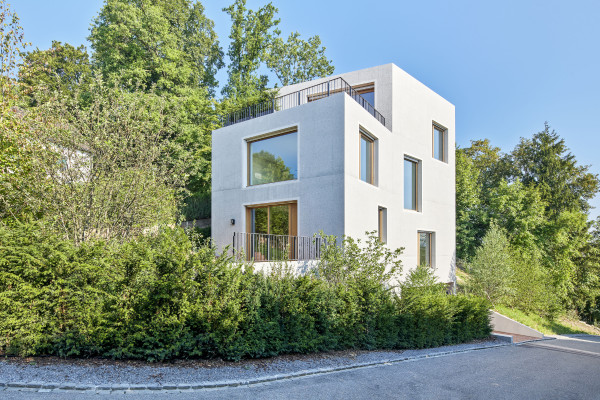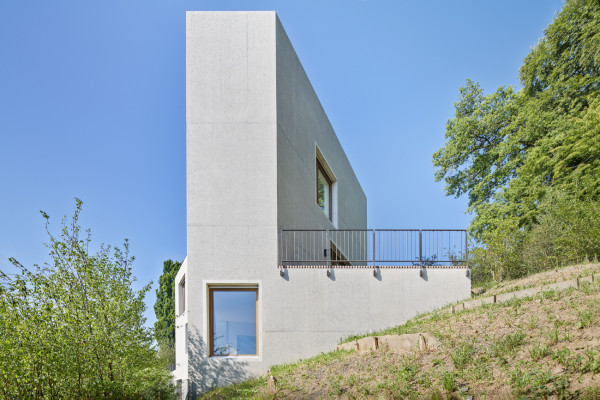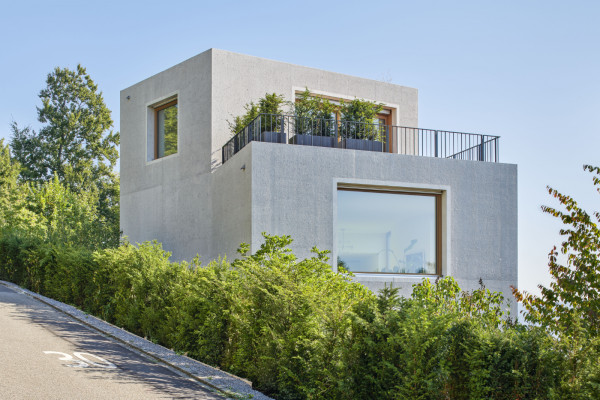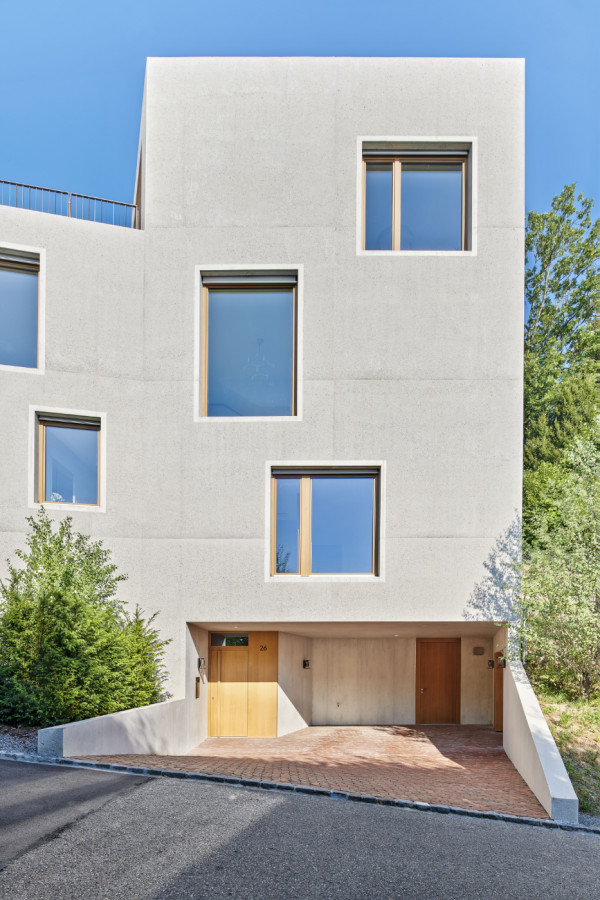Privathaus Thalwil is embedded in a steeply sloping, wooded plot with a magnificent view of Lake Zurich. These site-specific conditions determined the genesis of the project.
Due to the constricting site conditions, the basic shape of the house is inevitably a polygon formed by the result of the regulatory building-line and the forest-distance-line. In accordance with the building and zoning requirements, a staggered height is developed with a basement, two full floors and a partially set-back attic level.
The inventive use of the bay window rule and the arrangement of the floors as split levels make maximum use of the plot and give the house a surprising spatial generosity and diversity. In order to allow the bay windows to appear as facade fragments, as required by building law, they are folded out in the east and west from a clearly recognisable bend line. This allows well-tailored rooms to be formed on the constricted south side, as well as a spatious roof terrace.
In relation to the steep topography, the split levels allow for optimal embedding into the terrain with terraced outdoor spaces on all levels. A generous staircase with short flights of stairs creates a natural spatial context.




























